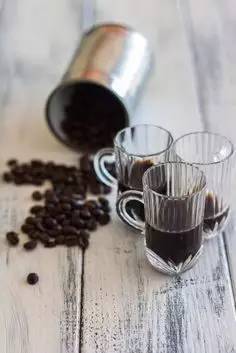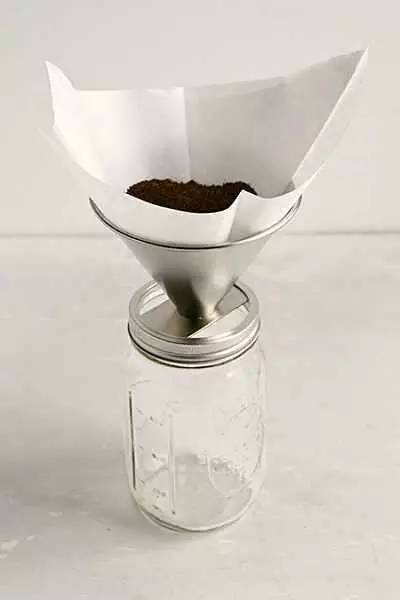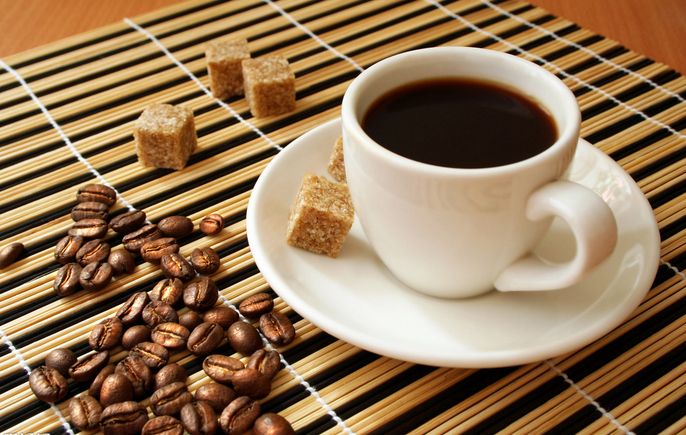What is coffee extraction? Explain coffee extraction by mathematical method
Follow the caf é (Wechat official account vdailycom) and found that Beautiful Cafe opened a small shop of its own.
"We want to verify this in a quantifiable way." Lee said. "instead of saying, 'coffee powder needs to be ground a little thicker,' we will say,'my coffee powder should have a particle size of XX'."
Through complex mathematical calculations, scientists have fully explained the mystery of coffee extraction for us. With their help, we can make the coffee we drink every day more accurately and scientifically in our daily life.
Recently, a research report on the science of coffee extraction was published in the journal Industrial and Applied Mathematics.

Coffee contains more than 1800 chemicals and is one of the most popular beverages in the world.
According to incomplete statistics, the global daily coffee consumption exceeds 1 billion cups.
Making the perfect coffee has always been everyone's dream, and Kevin Moroney from the University of Limerick in the UK and William Lee from the University of Portsmouth have explained to us what it takes to make the perfect coffee.
The feature of this study is that the researchers focused on dripping coffee. Although there are many previous studies on coffee extraction, it is the first time that dripping coffee has been studied.
In Europe, on average, people buy more than 18 million drip coffee machines every year, and many people make coffee by hand at home.

Water filters the coffee under the action of gravity, bringing out the soluble aromatic substances.
"our aim is to use mathematical modeling to improve the design of the existing drip coffee machine, which is like making a racing car with fluid and solid mechanics." Dr. Lee said in an interview with BBC.
In this study, Lee and his colleagues first conducted a special study on the effect of coffee powder particle size on coffee flow patterns.
"what is amazing is that the extraction of coffee is actually divided into two stages. in the first stage, the speed is very fast, and the substances on the surface of coffee powder are extracted first, and then in the second stage, the soluble substances inside the particles are slowly extracted."
Previous studies have shown that if the coffee is ground too finely, the coffee will be overextracted and the taste will become bitter; otherwise, the coffee will become too plain.
"We want to verify this in a quantifiable way." Lee said. "instead of saying, 'coffee powder needs to be ground a little thicker,' we will say,'my coffee powder should have a particle size of XX'."
Lee says this can make daily coffee grinding more accurate.
Lee points out that he usually sets the parameters of the bean grinder to the maximum, so that "the coffee powder will be thicker than the standard, and the coffee will taste less bitter, which is closely related to the degree of coffee extraction in the two stages."
"in addition, if the coffee powder particles are larger, the flow rate will be faster and the contact time between water and coffee will be shorter, which will reduce the degree of coffee extraction."
"if the coffee is too bitter, it means that the contact area between the coffee powder and the water is too large, and the smaller the particles, the slower the flow, the longer the contact time between the water and the coffee powder, and the higher the degree of extraction of the coffee."
"in industrial applications, we hope that each coffee machine can have specific grinding parameters, so that consumers can accurately control the flow rate and the degree of extraction."
"if the coffee machine comes with a bean grinder, you should create a space for consumers to freely control the flow rate and particle size."
For now, Lee and his colleagues are looking at the effect of pressed powder shape on coffee extraction.
"the shape of pressed powder will disintegrate during brewing. Before brewing, pressed powder will remain flat, but once it starts brewing, the coffee powder will stick around the filter paper, which will also affect the taste of the coffee. " Lee said.
"this leads to another topic: how should we pour water? Is it poured into a single column of water, like a faucet? Or is it like a showerhead, pour in more? "
Important Notice :
前街咖啡 FrontStreet Coffee has moved to new addredd:
FrontStreet Coffee Address: 315,Donghua East Road,GuangZhou
Tel:020 38364473
- Prev

Coffee skill learning, Espresso presoaking method and principle
The pre-soaking function of the coffee machine is a lot of sellers as a selling point. Many friends have asked me about pre-soaking: is it really related to whether the coffee can be made well or not? First of all, let's understand a problem: how to make coffee such as hand-brewed coffee and French pressure Philharmonic pressure coffee. All of these methods require a process of soaking, which can also be understood as steaming or steaming.
- Next

What is a cup test? Introduction to cup testing learning
Coffee cup test, English called coffee cupping, also known as coffee tasting. Popular saying is to use a special brewing method to taste coffee. When testing a cup of coffee, we should distinguish whether the flavor, alcohol thickness, acidity and wet aroma of the coffee are pleasant. Most cup tasters use the following criteria to judge coffee. While tasting the coffee, you should
Related
- What is the meaning of lactic acid fermentation with coffee bean treatment?
- How to judge the state of foam by sound?
- How does the latte pull out the unicorn pattern? Come to get for a little trick to improve the flower pull!
- Will flower pulling affect the taste of the latte?
- Do you know the history of coffee?
- The difference between honey treatment and sun washing what is raisin honey treatment?
- What kind of milk can a novice use to make coffee foam to keep the foam longer? The correct method and skills of milking tutorial sharing
- Why do washed coffee beans taste sour? Flavor characteristics of washed Coffee
- Introduction to the skill of how to practice the size and height of water injection around the circle of hand-brewed coffee
- How do beginners practice coffee flower drawing from scratch?

